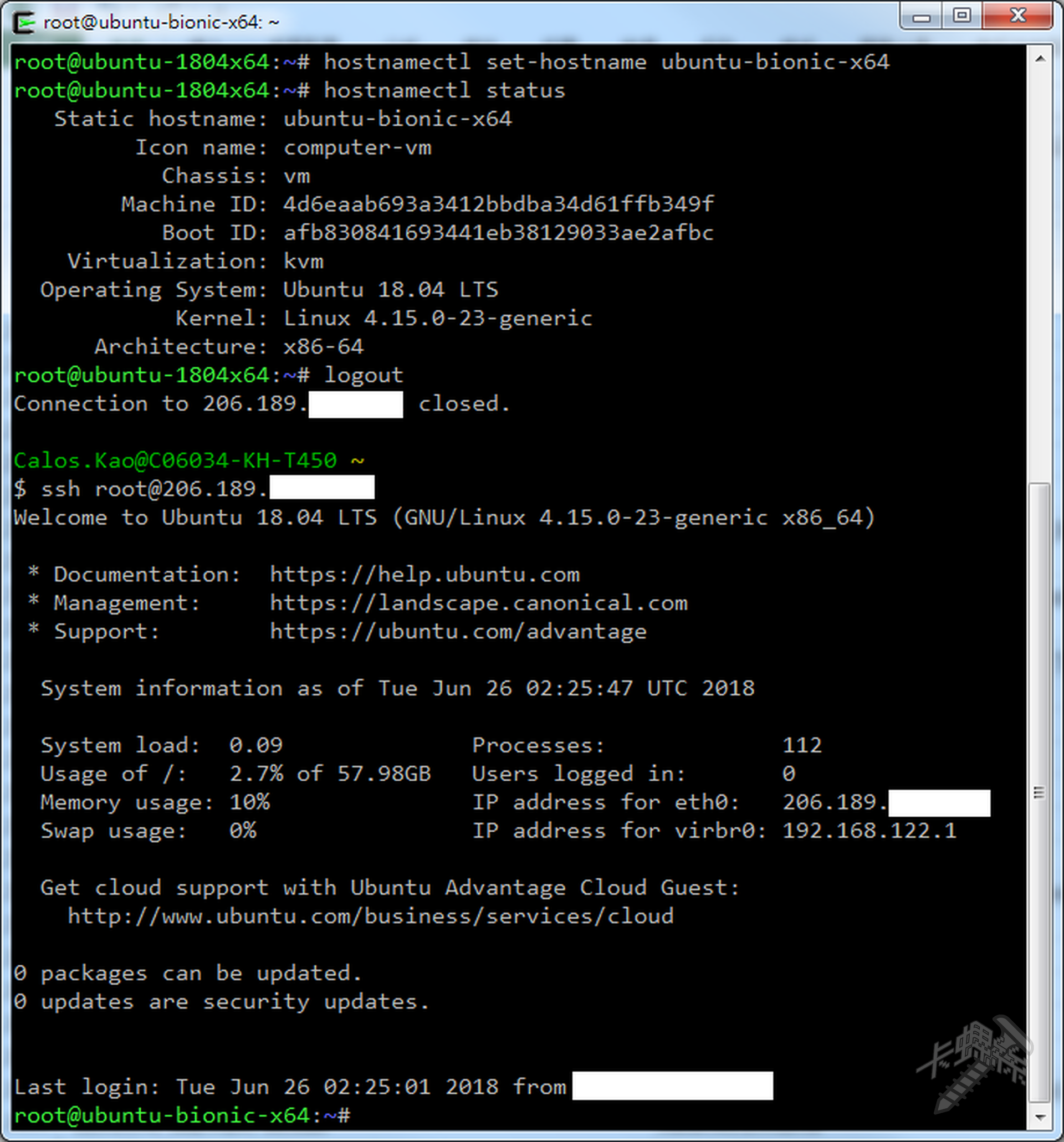早期 Ubuntu 修改主機名稱需要透過修改 /etc/hostname + 使用 hostname 指令才能完成,在某些情況下甚至需要重新啟動系統。而在 Ubuntu 13 以後的版本可以透過 hostnamectl 一個指令完成這件事情,且不需要重新啟動系統。
1
2
3
4
5
6
7
8
9
10
11
12
13
14
15
16
17
18
19
20
|
hostnamectl [OPTIONS...] COMMAND ...
Query or change system hostname.
-h --help Show this help
--version Show package version
--no-ask-password Do not prompt for password
-H --host=[USER@]HOST Operate on remote host
-M --machine=CONTAINER Operate on local container
--transient Only set transient hostname
--static Only set static hostname
--pretty Only set pretty hostname
Commands:
status Show current hostname settings
set-hostname NAME Set system hostname
set-icon-name NAME Set icon name for host
set-chassis NAME Set chassis type for host
set-deployment NAME Set deployment environment for host
set-location NAME Set location for host
|
例如,把主機名稱修改成 ubuntu-bionic-x64:
1
|
sudo hostnamectl set-hostname ubuntu-bionic-x64
|
這時候終端機還看不出變化,我們可以用 hostnamectl status 檢查有沒有修改成功:
1
2
3
4
5
6
7
8
9
|
Static hostname: ubuntu-bionic-x64
Icon name: computer-vm
Chassis: vm
Machine ID: 4d6eaab693a3412bbdba34d61ffb349f
Boot ID: afb830841693441eb38129033ae2afbc
Virtualization: kvm
Operating System: Ubuntu 18.04 LTS
Kernel: Linux 4.15.0-23-generic
Architecture: x86-64
|
檢查結果是有修改過的,登出後重新登入主機就可以看到終端機的主機名稱修改成功,完整過程如下圖。
References:
